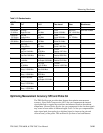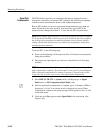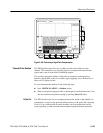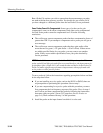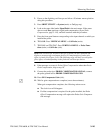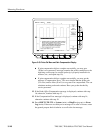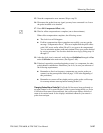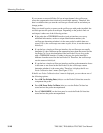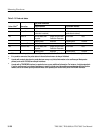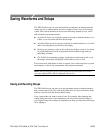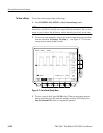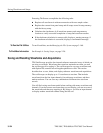
Measuring Waveforms
3–148
TDS 500C, TDS 600B, & TDS 700C User Manual
If you execute a successful Probe Cal on an input channel, the oscilloscope
stores the compensation data it derived in nonvolatile memory. Therefore, this
data is available when you turn the oscilloscope off and back on and when you
change probes.
When you install a probe or power on the oscilloscope with probes installed, the
oscilloscope tests the probe at each input. Depending on the probe it finds on
each input, it takes one of the following actions:
H If the probe has a TEKPROBE interface (such an interface can convey
additional information, such as a unique identification number), the
oscilloscope determines whether it is the same probe for which data was
stored. If it is, the oscilloscope sets status to pass; if not, it sets the status to
Initialized.
H If a probe has a simple oscilloscope interface, the oscilloscope can usually
determine if it has a different probe attenuation factor than that stored for the
last Probe Cal. It can also determine if the last Probe Cal was for a probe
with a TEKPROBE interface. If either is the case, the probe installed is
different from that stored for the last Probe Cal. Therefore, the oscilloscope
sets the status to Initialized.
H If a probe has a simple oscilloscope interface and the probe attenuation factor
is the same as was stored at the last Probe Cal, the oscilloscope cannot
determine whether it is the same probe. Therefore, it displays the Re-use
Probe Calibration data? menu. (See Figure 3–70.)
If the Re-use Probe Calibration data? menu is displayed, you can choose one of
the following options:
H Press OK Use Existing Data (side) to use the Probe Cal data last stored to
compensate the probe.
H Press OK Erase Probe Cal Data (side) to erase the Probe Cal data last
stored and use the probe uncompensated.
H Press CLEAR MENU on the front panel to retain the Probe Cal data last
stored and use the probe uncompensated.




